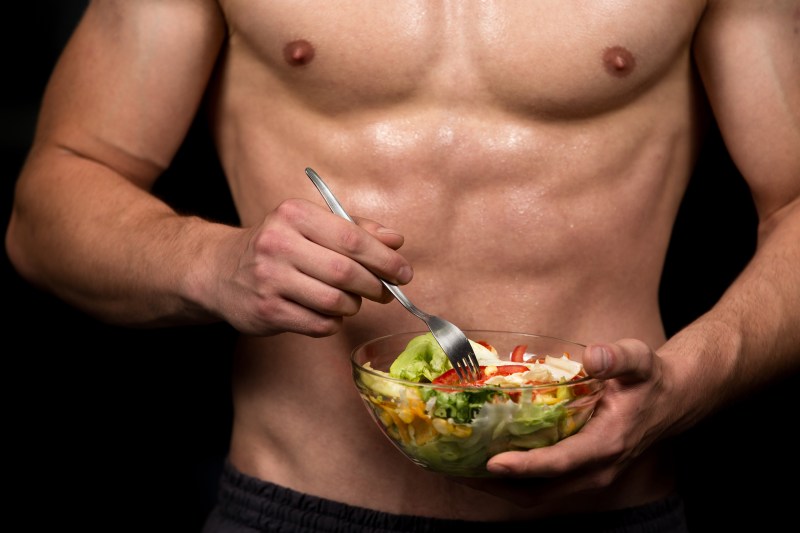Whether you have a vacation, wedding, or something else big coming up, you may want to drop a few pounds fast in order to feel and look your best. As a trainer and nutritionist, I have had many clients approach me with lofty weight loss goals and a short timeframe. While it is possible in some instances, it is usually not recommended to lose a lot of weight quickly.
Keep reading to learn how to lose 10 pounds in a week and general tips for a healthy weight loss journey!
Can you lose 10 pounds in a week?

While it is possible in some cases, losing 10 pounds in a week is not considered safe or realistic for most people. Losing that many pounds in such a short time is often a decrease in water weight or muscle mass, so you won’t actually be dropping 10 pounds of fat.
Rapid weight loss can have consequences, including dehydration, nutritional deficiencies, and a slower metabolism. Sustainable weight loss occurs gradually — give yourself five to 10 weeks to lose 10 pounds rather than one, and your body will thank you.
Factors that determine weight loss rate

Metabolism
Metabolism can significantly affect the speed of weight loss. People with a faster metabolism burn more calories at rest, which can lead to faster weight loss. Factors like age, genetics, and muscle mass all influence metabolic rate. Those with more muscle tend to burn calories more efficiently, aiding quicker fat loss.
Sleep and stress
Quality sleep and stress levels play a key role in weight loss. Poor sleep and high stress can disrupt hormones related to hunger and fat storage, making weight loss occur even slower. Chronic stress also increases cortisol levels, which may promote fat storage, especially around the belly area.
Starting weight
If you are starting your weight loss journey at a higher weight, you may experience faster initial weight loss than somebody else. The body typically sheds more pounds in the beginning stages. However, as weight decreases, the rate of loss often slows down because the body requires fewer calories to maintain a smaller size.
What is a realistic weekly weight loss goal?

A realistic weekly weight loss goal is one to two pounds. This rate allows for steady, sustainable progress without compromising your health and putting you at risk of losing muscle mass. Losing one pound requires a calorie deficit of approximately 3,500 calories, which you can achieve through diet, exercise, or a combination of both.
If you consistently lose more than two pounds per week, you are at a greater risk of gaining the weight back down the road. Consistently losing one to two pounds per week allows for better long-term results and helps you maintain muscle mass. Overall, it’s important to focus on a lifestyle of doable healthy habits that will support your fitness goals.
Tips for losing weight safely

Eat in a calorie deficit
The key to losing weight safely is maintaining a calorie deficit — burning more calories than you consume. To achieve this, you can either reduce your calorie intake, increase physical activity, or commit to a combination of both.
A great place to start with your calorie deficit is around 250 to 500 calories per day. If you were consistent with a deficit of 500 calories daily, it would take you seven days to lose one pound. Avoid drastic cuts in calories, as this can lead to nutrient deficiencies and a slower metabolism.
Focus on a balanced diet
Rather than following fad diets or extreme restrictions, keep it simple and stick to a balanced, nutrient-dense diet. Incorporate plenty of whole foods like vegetables, fruits, lean proteins, whole grains, and healthy fats. These foods provide the necessary vitamins and minerals your body needs to function properly while supporting fat loss.
Avoid highly processed foods and added sugars, which are often calorie-dense with little nutritional value. Balancing your macronutrients — proteins, fats, and carbohydrates — can help you feel full and satisfied, making sticking to your deficit easier.
Drink plenty of water
Consistently drinking enough water is essential for overall health and weight loss. Water helps with digestion, nutrient absorption, and keeping hunger at bay. Sometimes, thirst is mistaken for hunger, leading to overeating.
Aim to drink at least eight cups (64 ounces) of water daily and more if you’re physically active or live in hot climates. Herbal teas and infused water with fruits or herbs can also be great alternatives to sugary drinks, providing hydration without the extra calories.
Have a regular exercise routine
Exercise is a crucial component of safe weight loss. It helps you burn calories, improve your metabolism, and preserve lean muscle mass. Aim for a combination of aerobic exercise (like walking, jogging, cycling) and strength training (like weight lifting or bodyweight exercises). Cardio helps with calorie burning, while strength training increases muscle mass, which in turn boosts metabolism. Aim for at least 150 minutes of moderate-intensity cardio each week, along with two or more days of strength training.
Prioritize sleep
Sleep is often overlooked due to crazy schedules and commitments, but it is critical for weight loss and your overall well-being. Poor sleep can disrupt hormones that regulate hunger, resulting in cravings that can steer you away from your deficit.
Aim for a minimum of seven hours of quality sleep per night. Establish a consistent sleep schedule, limit screen time before bed, and create a relaxing bedtime routine to improve sleep quality. Ensuring proper rest can make your weight loss journey much more effective.
Frequently asked questions

How can I drop 10 pounds quickly?
To drop 10 pounds quickly, you would need to focus on eating in a severe calorie deficit and only consume nutrient-dense, low-calorie foods like vegetables and lean protein sources. You would also likely need to spend many hours exercising to put you in enough of a deficit. All of this is not recommended, as the process is too harsh on the body and could result in a slower metabolism and muscle mass loss.
How fast can I realistically lose 10 pounds?
Losing 10 pounds realistically takes five to 10 weeks, depending on your calorie deficit and activity level. A safe rate of weight loss is one to two pounds per week by maintaining a 500 to 1,000 calorie deficit daily. Quick weight loss methods may be unsustainable, so focus on gradual, healthy changes for lasting results.
How can I slim down in seven days?
To slim down in seven days, focus on a balanced, calorie-controlled diet rich in fruits, veggies, lean proteins, and whole grains. Incorporate daily cardio and strength training exercises to burn fat and build muscle. Stay hydrated, reduce sodium intake to avoid bloating, and prioritize sleep for optimal results.




